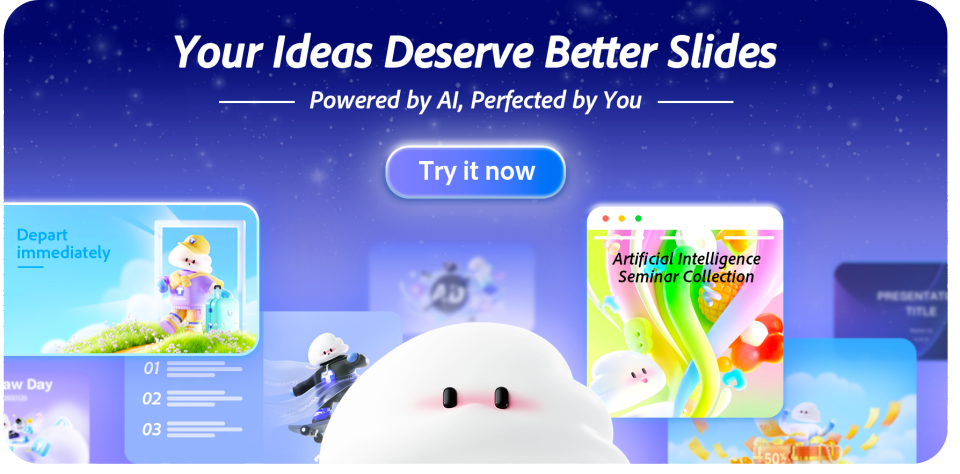AI’s influence is growing across industries — from healthcare and finance to retail and manufacturing — changing how organizations operate and compete. Understanding the different domains of artificial intelligence is crucial for businesses and technology enthusiasts because it clarifies which tools, data, and skills are needed to solve specific problems and capture value. Read on for a domain-by-domain look at applications, business impact, and practical guidance to help you choose the right AI approach.
Artificial intelligence is rapidly expanding its influence across industries. Understanding the different domains of artificial intelligence is crucial for businesses and technology enthusiasts because it reveals which tools, models, and data strategies work best for specific problems and how to capture value responsibly.
AI is already changing healthcare by improving diagnostics through image recognition and predictive models; transforming finance with automated trading, fraud detection, and credit scoring; and reshaping retail via personalized recommendations and inventory optimization. These examples show how machine learning and natural language technologies turn raw data into actionable insights that drive better decisions and customer experiences.
As organizations adopt AI applications, they must consider data quality, model selection, and integration with existing systems. The sections that follow break down the core domains — from machine learning and natural language processing to computer vision, robotics, and expert systems — and explain practical uses, emerging trends, and what businesses need to succeed.
What Are the Key Domains of AI?
Artificial intelligence includes several distinct domains—each built on different data, models, and algorithms—that together power modern applications. Understanding these domains helps you choose the right technology for a problem, prepare the necessary data and infrastructure, and design systems that deliver measurable value.
1)Machine Learning (ML): Supervised, unsupervised, and reinforcement learning.
Machine learning enables systems to learn patterns from data and make predictions or decisions. Approaches include supervised learning (models trained on labeled examples), unsupervised learning (discovering patterns in unlabeled data), and reinforcement learning (agents that learn via trial-and-error rewards). Subfields such as neural networks and deep learning power many modern advances—deep models are widely used for image and speech tasks, recommendation engines, and time-series forecasting.
Common applications:
- Predictive models for demand forecasting, credit scoring, and predictive maintenance (uses structured data and time-series).
- Recommendation systems that analyze user behavior and purchase history to increase customer engagement.
- Anomaly and fraud detection using models that recognize unusual patterns in transaction data.
2)Natural Language Processing (NLP): Chatbots, language translation, sentiment analysis.
Natural language processing (NLP) and related language processing techniques let machines understand and generate human language—text and speech. NLP covers tasks such as tokenizing words, named-entity recognition, machine translation, question answering, and sentiment analysis that measures opinions in text.
Common applications:
- Chatbots and virtual assistants that use text and speech models to handle customer requests and automate support.
- Automated translation and summarization that convert and compress information across languages.
- Sentiment and social listening tools that analyze words and phrases to surface user insights.
3)Computer Vision: Image recognition, facial recognition, autonomous vehicles.
Computer vision focuses on interpreting images and video—extracting features, recognizing objects, and enabling machines to “see.” Techniques combine convolutional neural networks and other deep models to perform image recognition, object detection, segmentation, and tracking. Vision systems are widely used in diagnostics (medical imaging), quality inspection in manufacturing, and vehicle perception for autonomy.
Common applications:
- Image and object recognition for diagnostics, retail shelving analysis, and content moderation.
- Facial recognition for authentication and security (note: legal and ethical considerations apply).
- Perception stacks in autonomous vehicles and drones that fuse vision with other sensors to navigate safely.
4)Robotics: Industrial automation, AI-powered robots.
Robotics integrates perception, planning, and control to create physical systems (robots) that interact with the world. In industry, robots and robotic systems automate repetitive or hazardous tasks, while service robots assist in logistics, healthcare, and hospitality. Robotics projects combine computer vision, machine learning, and control systems to turn models into physical action.
Common applications:
- Industrial robots for assembly, welding, and material handling that improve speed and consistency.
- Autonomous mobile robots (AMRs) in warehouses for goods transport and inventory handling.
- Service robots that assist with deliveries, disinfection, or patient care in constrained environments.
5)Expert Systems & Knowledge Representation: Decision-making systems, rule-based AI.
Expert systems and knowledge representation encode domain rules and structured knowledge to support decision-making. These systems use rule-based logic, ontologies, and knowledge graphs to represent facts and relationships, enabling deterministic reasoning, explainability, and integration with human workflows. They remain important for regulatory, diagnostic, and advisory applications where transparent reasoning is required.
Common applications:
- Clinical decision-support systems that combine medical guidelines with patient data to suggest diagnoses or treatments.
- Rule-based compliance engines that check transactions or processes against regulatory rules.
- Enterprise knowledge graphs that connect people, documents, and data to support search and recommendations.
Summary table:
| Domain | Description | Applications |
|---|---|---|
| Machine Learning | Learning from data using models and algorithms (supervised, unsupervised, reinforcement) | Forecasting, recommendations, fraud detection |
| Natural Language Processing (NLP) | Processing and generating human language (text and speech) | Chatbots, translation, sentiment analysis |
| Computer Vision | Interpreting images and video (object recognition, detection) | Image recognition, facial recognition, autonomous perception |
| Robotics | Physical systems that perceive and act in the world | Industrial automation, AMRs, service robots |
| Expert Systems | Knowledge representation and rule-based decision-making | Clinical decision support, compliance engines, knowledge graphs |
Note on examples and sources: the companies and tools referenced represent common industry use cases—consider adding citations for specific vendor claims when adapting this content for publication.
Next up: How these domains are applied across industries like healthcare, finance, retail, and manufacturing—read on to see concrete business examples and implementation notes.
How AI Domains Are Applied Across Industries
AI technologies play a critical role across multiple sectors, enhancing efficiency and delivering innovative solutions. Each industry leverages specific domains of artificial intelligence to address its unique problems — for example, healthcare relies heavily on computer vision and predictive models, finance uses machine learning for risk scoring and fraud detection, retail applies recommendation systems and NLP for personalization, and manufacturing combines robotics with predictive analytics to improve uptime.
1)Healthcare: AI-powered diagnostics, drug discovery.
In healthcare, AI applications improve diagnosis accuracy and accelerate research by analyzing large volumes of medical data. Computer vision and deep learning models analyze medical images for faster, often earlier detection of conditions (e.g., radiology image analysis, pathology slide interpretation). Predictive models trained on electronic health records can flag patients at risk, and ML-driven pipelines shorten drug-discovery cycles by prioritizing promising compounds.
Concrete examples:
- Image-based diagnostics: convolutional neural networks for detecting anomalies in X-rays or MRIs (image recognition applied to medical imaging).
- Drug discovery workflows: ML models that screen molecular data to predict candidate compounds and prioritize lab testing.
2)Finance: Fraud detection, automated trading, credit scoring.
The finance sector uses machine learning and analytics to detect fraud, automate trading decisions, and assess credit risk. Algorithms ingest streaming transaction data to spot anomalous behavior in real time, while models for credit scoring combine structured financial information and alternative data to improve lending decisions.
Concrete examples:
- Fraud detection: anomaly detection models that analyze transaction patterns to block suspicious activity.
- Automated trading: algorithmic systems that evaluate market signals and execute trades based on model-driven strategies.
- Credit scoring: ML models that integrate traditional credit data with behavioral signals to refine risk estimates.
3)Retail: Personalized recommendations, inventory optimization.
Retailers use AI to create personalized shopping experiences and optimize supply chains. Recommendation models analyze purchase histories and user behavior to suggest relevant products, increasing conversion and average order value. Inventory-forecasting models use historical sales, promotions, and external data to predict demand and reduce stockouts or overstock.
Concrete examples:
- Recommender systems: collaborative filtering and deep-learning models that surface products customers are likely to buy.
- Inventory optimization: time-series forecasting and demand-sensing models that improve replenishment decisions and reduce waste.
4)Manufacturing: Predictive maintenance, robotic automation.
In manufacturing, AI enhances operations through predictive maintenance and robotics. Predictive models analyze sensor telemetry and production data to anticipate equipment failures and schedule maintenance before breakdowns occur. AI-powered robots and automation systems perform repetitive tasks with higher consistency, improving throughput and quality.
Concrete examples:
- Predictive maintenance: ML models that use vibration, temperature, and operational metrics to forecast component failure.
- Robotic automation: vision-guided robots that perform inspection, assembly, or material handling tasks.
Cross-cutting themes across these industries include the need for high-quality labeled data, robust model governance, explainability, and careful integration with legacy systems. Successful projects combine domain expertise, clear performance metrics, and production-ready tooling to move from pilot to scale.
Which domain fits your business challenge? Consider the type of data you have (images, text, sensor streams, transactions), the decisions you want to improve, and the user-facing outcomes you expect. Next, explore emerging domains — generative AI, autonomous systems, and AI-driven cybersecurity — to see how new capabilities expand the range of possible solutions.

Emerging AI Domains and Cutting-Edge Applications
As you explore the landscape of emerging AI domains, several cutting-edge areas are expanding the range of practical applications. These domains introduce new models, tools, and workflows that let organizations generate content, build autonomous machines, and improve security through smarter threat detection. Below are three emerging areas to watch and how they work in practice.
1)Generative AI: Text, image, and video generation.
Generative AI uses advanced models—often based on neural networks and deep learning—to produce new content from data. Typical inputs include text prompts, image seeds, or audio; models then generate coherent text, photorealistic images, or video snippets. Common workflows follow a simple pattern: collect and clean data → train or fine-tune models → evaluate outputs for quality and bias → deploy via API or tooling.
Use cases and examples:
- Marketing and content creation: generating product descriptions, ad copy, or short videos to scale creative output.
- Image and video synthesis: creating visuals for design, prototyping, or localized marketing with image-generation models.
- Voice and speech synthesis: producing synthetic voices for narration or accessibility features.
Risks and maturity notes: while generative models enable rapid content production, they can create deepfakes or misleading information if not governed properly. Implement content verification, provenance tracking, and human review before publishing.
2)Autonomous Systems: Drones, self-driving vehicles.
Autonomous systems combine perception (often computer vision), sensor fusion, planning, and control to operate without direct human input. Drones and self-driving vehicles are prominent examples: they use cameras, LIDAR, radar, and other sensors plus models that recognize objects and predict motion to navigate complex environments.
Use cases and examples:
- Logistics and inspection: drones that collect aerial images for inventory checks, crop monitoring, or infrastructure inspection.
- Transportation: self-driving vehicle prototypes and pilot deployments that aim to reduce accidents and improve efficiency (note: regulatory and technical maturity vary by region).
Risks and maturity notes: autonomous systems require robust testing, safety validation, and compliance with local regulations. Many deployments start in constrained environments (geofenced areas, closed campuses) before scaling.
3)AI in Cybersecurity: Threat detection and automated response.
AI in cybersecurity improves threat detection and response by analyzing network telemetry, logs, and behavior patterns in real time. Models can surface suspicious activity, prioritize alerts, and trigger automated containment steps for common attack vectors.
Use cases and examples:
- Threat detection: anomaly detection algorithms that flag unusual network traffic or account behavior.
- Automated response: playbooks that quarantine infected machines or block malicious IPs based on model confidence, reducing mean time to respond.
Risks and maturity notes: attackers also leverage AI to craft more sophisticated attacks; therefore, defenses must include human oversight, model explainability, and regular retraining on fresh data.
Technical touchpoints across these domains include model selection (transformers, CNNs), training data quality, evaluation metrics, and deployment tooling (APIs, edge runtimes). Before adopting these emerging technologies, businesses should assess data readiness, governance controls, and user impact.
Next: learn how understanding these domains delivers concrete business benefits and what challenges to prepare for in adoption.

Benefits of Understanding AI Domains for Businesses
Recognizing the different domains of AI enables organizations to apply the right technology, models, and data strategies to real problems. When leaders understand domains such as machine learning, natural language processing, computer vision, robotics, and expert systems, they can prioritize initiatives that deliver measurable value — from better operational efficiency to improved customer experiences.
1)Improved decision-making and operational efficiency.
AI-driven analytics and predictive models can turn raw data into timely insights that support faster, more accurate decisions.
- Forecasting: time-series models reduce stockouts and improve inventory turns by predicting demand more accurately.
- Operations: predictive maintenance models analyze sensor streams to schedule repairs before failures, reducing downtime and maintenance costs.
These applications use machine learning to automate routine analysis and highlight exceptions, freeing people to focus on strategic work.
2)Enhanced customer experiences through personalized solutions.
AI enables personalization at scale by combining customer data with learning-based models to recommend products, tailor messages, and automate support.
- Recommender systems: collaborative filtering and deep-learning models increase relevance and average order value by surfacing products a customer is likely to buy.
- Personalized support: NLP-powered chatbots handle common queries and route complex issues to humans, improving response times and satisfaction.
These systems produce better customer outcomes by using data responsibly to deliver relevant experiences.
3)Competitive advantage via early adoption of emerging AI technologies.
Early, well-governed adoption of AI can differentiate a company by improving speed, cost structure, and customer value propositions.
- First-mover pilots: a focused 90-day pilot in one domain (e.g., predictive maintenance or a recommender) can demonstrate ROI and build internal confidence.
- Platform advantage: investing in data infrastructure and reusable models speeds subsequent deployments and reduces time-to-value.
To capture these benefits, assess data readiness, choose appropriate systems and tooling, and define clear success metrics before scaling. Consider a small pilot to validate value and inform a wider rollout.

Challenges and Considerations in AI Implementation
As organizations integrate artificial intelligence into operations, they encounter recurring challenges that can derail projects if not addressed early. Key areas to plan for include ethical AI and bias mitigation, data privacy and security, and the technical and organizational complexities of integrating AI with existing systems.
1)Ethical concerns and AI bias.
AI systems can unintentionally reproduce or amplify biases present in training data, producing unfair or discriminatory outcomes. Mitigation steps include:
- Data governance: audit datasets for representation gaps, document provenance, and apply bias-detection tests before training.
- Explainability and monitoring: use model-interpretability tools (SHAP, LIME, attention visualization) and monitor live performance to detect drift and disparate impacts.
- Governance frameworks: establish an ethics review board or impact assessment process to approve high-risk use cases.
2)Data privacy and security.
Protecting user information is critical. AI projects often require large volumes of sensitive data, so privacy-preserving practices are essential:
- Minimize and anonymize: collect only necessary fields, pseudonymize or anonymize records where possible.
- Technical controls: apply encryption at rest and in transit, role-based access, and differential privacy or federated learning for sensitive workloads.
- Compliance: map data flows to regulatory requirements (GDPR, CCPA, sector-specific rules) and document consent and retention policies.
3)Integration with legacy systems.
Connecting AI models to existing systems and workflows presents both technical and cultural challenges. Practical steps include:
- Start with APIs and microservices: wrap models as services to avoid invasive changes to legacy platforms.
- Infrastructure readiness: ensure data pipelines, feature stores, and model monitoring are production-grade to support continuous delivery.
- Reskilling and change management: train teams on new tools and clarify roles for model ops, data engineering, and business owners.
Readiness checklist for teams:
- Data quality: labeled, diverse, and well-documented datasets.
- Infrastructure: scalable storage, compute, and deployment tooling.
- Governance: privacy controls, ethical review, and clear success metrics.
- Skills: data engineers, ML engineers, and domain experts aligned to objectives.
Common technical problems—poor data, unexplainable models, and fragile integrations—are solvable when teams combine strong governance, production-ready systems, and iterative pilots. As a next step, run an ethical impact assessment for high-risk cases and plan a small pilot that includes monitoring and rollback procedures.

Future Trends in AI Domains and Applications
Looking ahead, several clear trends will shape how organizations use AI. These are not certainties but observable shifts driven by advances in models, data availability, and tooling. Below are three trends to watch and practical signals of when they are reaching maturity.
1)Expansion of AI into creative industries.
AI is increasingly used to generate music, design visuals, draft scripts, and assist in game and film production. Generative models that create text, images, and short videos are enabling new workflows for creative teams, from rapid prototyping to personalized content at scale.
Examples and signals:
- Use cases: automated copy generation for marketing, image generation for advertising assets, and AI-assisted music composition.
- Maturity signals: high-quality model outputs, integrated creative tooling, and clear provenance controls for authenticity.
2)AI-driven automation across new sectors.
Automation powered by machine learning and sensor-driven models is expanding beyond manufacturing into agriculture, logistics, and healthcare operations. These systems analyze data streams from IoT devices and machines to optimize inputs, reduce waste, and increase throughput.
Examples and signals:
- Use cases: precision agriculture that applies inputs by plant needs, logistics route optimization, and automated inventory replenishment.
- Maturity signals: pilots moving to production, measurable ROI on efficiency metrics, and integrations with existing operational systems.
3)Collaborative AI-human workflows.
Rather than replacing people, the most impactful AI deployments will augment human decision-making. Collaborative workflows combine human judgment with model-driven analysis to speed decisions while retaining accountability and context.
Examples and signals:
- Use cases: augmented decision-support in medicine (model suggests diagnoses; clinicians validate), assisted customer support (AI drafts responses; humans edit), and hybrid creative workflows.
- Maturity signals: adoption of explainability tools, well-defined handoff points between models and people, and measurable improvements in quality or speed.
What to watch—three adoption indicators:
- Regulation: emerging standards and sector-specific guidance that clarify acceptable use.
- Tooling: availability of production-grade platforms for model training, deployment, and observability.
- Workforce readiness: reskilling programs and cross-functional teams that combine domain experts with ML engineers.
In short, expect AI to expand into creative roles, automate more operational tasks, and become a collaborator in human workflows. Track data readiness, model performance, and regulatory signals as you evaluate where to pilot next.
Conclusion
Understanding the different domains of artificial intelligence — from machine learning and natural language processing to computer vision, robotics, and expert systems — is essential for applying the right tools to real business problems. Leveraging AI applications can transform industries by turning data into timely insights, improving decisions, and automating tasks that free teams to focus on higher‑value work.
To move forward, balance exploration of established domains with pilots in emerging areas (like generative AI and autonomous systems) so you capture near-term wins while positioning for future opportunities. Assess data readiness, define clear success metrics, and plan a phased rollout that includes governance and monitoring.
Next step: start with a focused pilot in the domain that best matches your data and business objective (for example, a 90‑day predictive maintenance or recommender pilot), measure outcomes, and scale what works. If you’d like, download a checklist or contact an expert to help design your first pilot.











